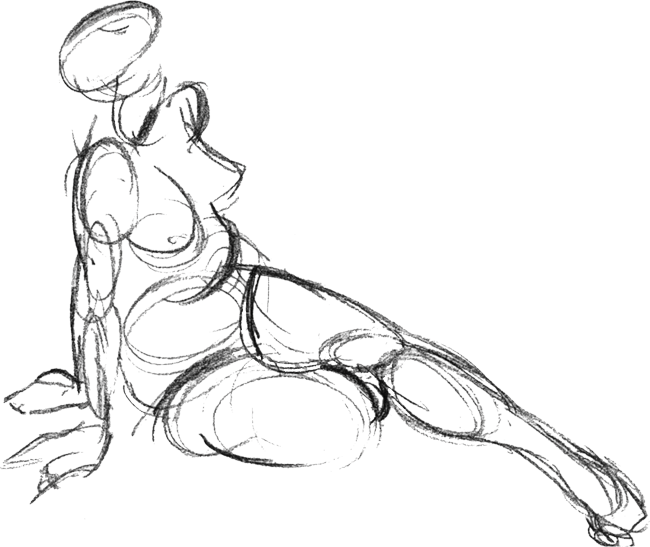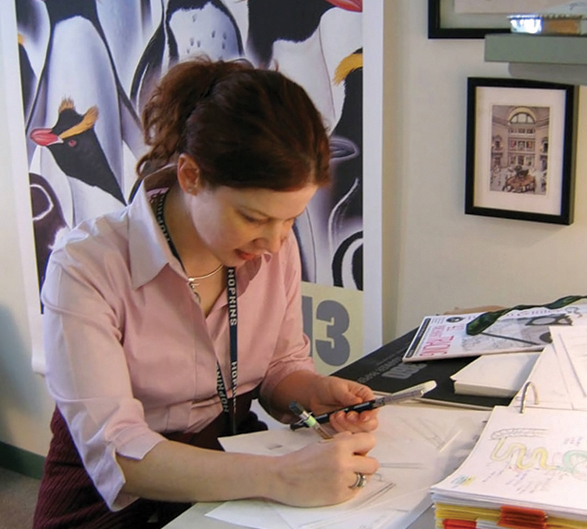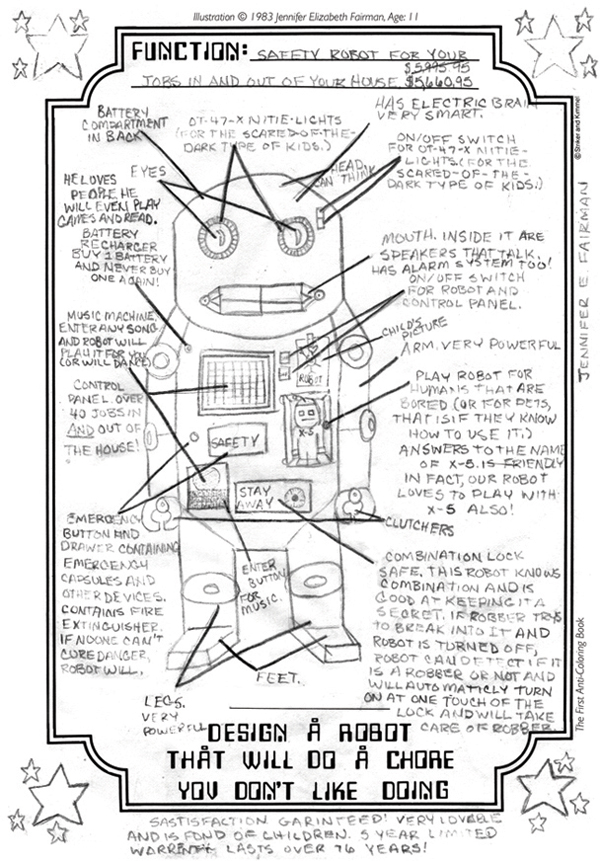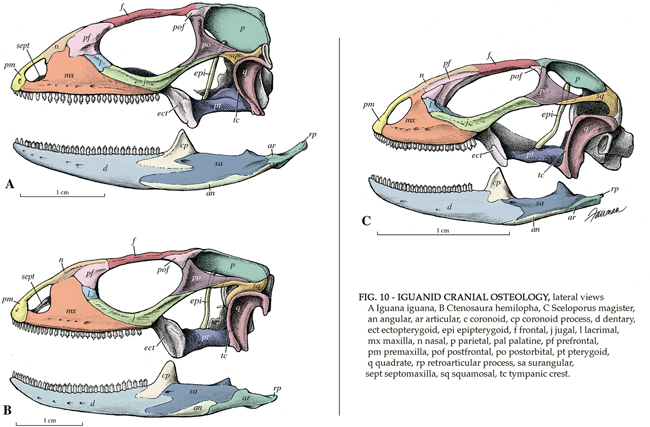Art
Medical illustrator puts a soft edge on the hard sciences
‘It’s not Leonardo da Vinci every day,’ she says
 |
| Drawing of a human figure. © 1992 Jennifer E. Fairman |

of the journal Molecular & Cellular Proteomics in December focused on post-translational modifications. To convey the complexity of the molecular biology and biochemistry involved in these modifications, was recruited to help with the illustrations and schematics as well as to design the cover art of the special issue.
Fairman is a certified medical illustrator who holds a faculty position as an assistant professor at the Johns Hopkins University School of Medicine’s Department of Art as Applied to Medicine. At Hopkins, she teaches in the department’s graduate program and does work for other Hopkins medical and science departments. She also runs her own freelance business, .
 |
| Quail chick. Drawing for the Virginia Living Museum newsletter. © 1991 Jennifer E. Fairman |
 |
| Safety robot. As a child, Fairman loved to draw imaginary creations in her coloring books. © 1983 Jennifer E. Fairman |
As a child
While growing up in Houston, Fairman was fascinated by her teachers. She thought it was amazing “how much teachers knew and how they shared knowledge and contributed to other people’s budding futures,” she says. She hoped to grow up to be a teacher.Fairman excelled at math and science and attended the Michael E. DeBakey High School for Health Professions. Attending a magnet school like DeBakey opened up the alternate professional career of medicine. But “in the background, there was always art. Art was my hobby, my stress relief,” she says.
When Fairman was 15, her parents relocated the family to Newport News, Va. “I was born and raised in Houston. It was all I knew at that time, so (the move) was the most devastating thing to ever happen to a kid like me!” she says with a laugh. She attended a regular high school in Newport News, but the guidance counselor knew of her passion for science and math.
One day, the nurses of Riverside Hospital came to speak to students about careers in nursing. “I was invited to go to the library to listen to them. I wasn’t really interested in nursing, but I went anyway because I could get out of German class,” says Fairman. At the library, Fairman sat at the back and began flipping through a booklet the nurses had handed out on health science careers. In flipping through the pages, a picture caught her eye.
“There was this picture of a woman sitting at a drawing table with a skull, a huge picture of an eye and some anatomical drawings around her, and all these different references. She was drawing. I thought, ‘There’s an artist! What is this?’ I wasn’t even reading what it was. I was just looking at the picture. I was so mesmerized,” recalls Fairman. “Then I looked at the title of the career, and it said ‘Medical Illustrator.’”


